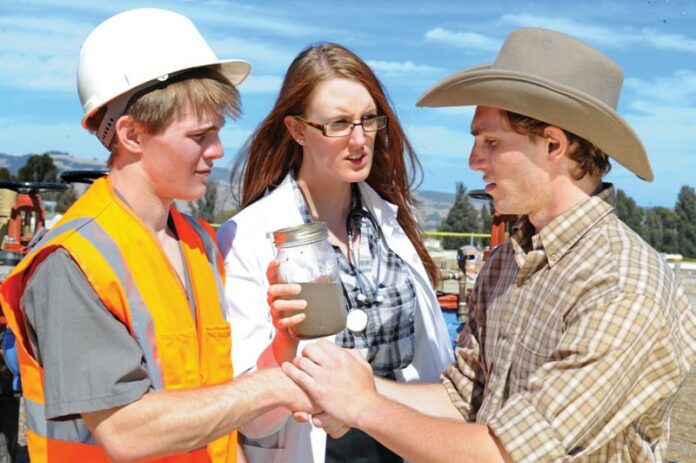Sonoma State University is doing something truly remarkable this school year. In a brilliantly conceived move combining numerous disciplines into one year-long package, SSU’s department of theater arts and dance has launched its “Water Works” series, using the theatrical arts—with the help of the school’s science and sociology departments—to explore various issues related to water.
Education through entertainment—what a concept.
Now running is Adam Chanzit’s timely political drama The Great Divide. Directed by Doyle Ott, the play is loosely based on Henrik Ibsen’s Enemy of the People, updating the drama from a Norwegian coastal town in 1889 to a tiny rural burg in 2006 Colorado.
Dr. Katherine Stockman (Laura Millar) has returned to her hometown, with her family in tow, after years abroad fighting illness and injustice in Third World countries. Things are not the same at home as when she left. The economic downturn that had left much of the town unemployed and desperate has been reversed, due to the presence of a massive new natural-gas plant that employs a large number of townsfolk. Suddenly, people have money, including her brother Peter (Connor Pratt), who’s now the mayor. Not everyone is thrilled with the new bosses in town, though, and some townsfolk resent the way the energy utility bullies folks around, drilling wherever they please.
And by drilling, we mean “fracking,” the controversial method that cracks open the rock bed deep in the earth, releasing the natural gas through the injection of high-pressured water, sand and chemicals. It’s highly effective, and the use of the process has created a new energy boom—but at what cost?
As Stockman settles back in, worried townsfolk begin seeking medical attention, complaining about an array of problems that may or may not be caused by something in the local drinking water. Gradually, Katherine finds herself leading the fight against the energy company—and much of the suddenly prosperous town—as she is convinced that the town’s groundwater is being poisoned.
Impressively visual, with a massive drilling rig hovering over the tiny houses of the town, the play is performed with passion and a sense of urgency by a large student cast. A thoughtfully designed handout, provided to audience members, is packed with information about fracking, economics and Henrik Ibsen.
The goal of much art is to inspire discussion and refection. Sonoma State’s “Water Works” series is a brilliant example of how art and education can be a perfect fit.











